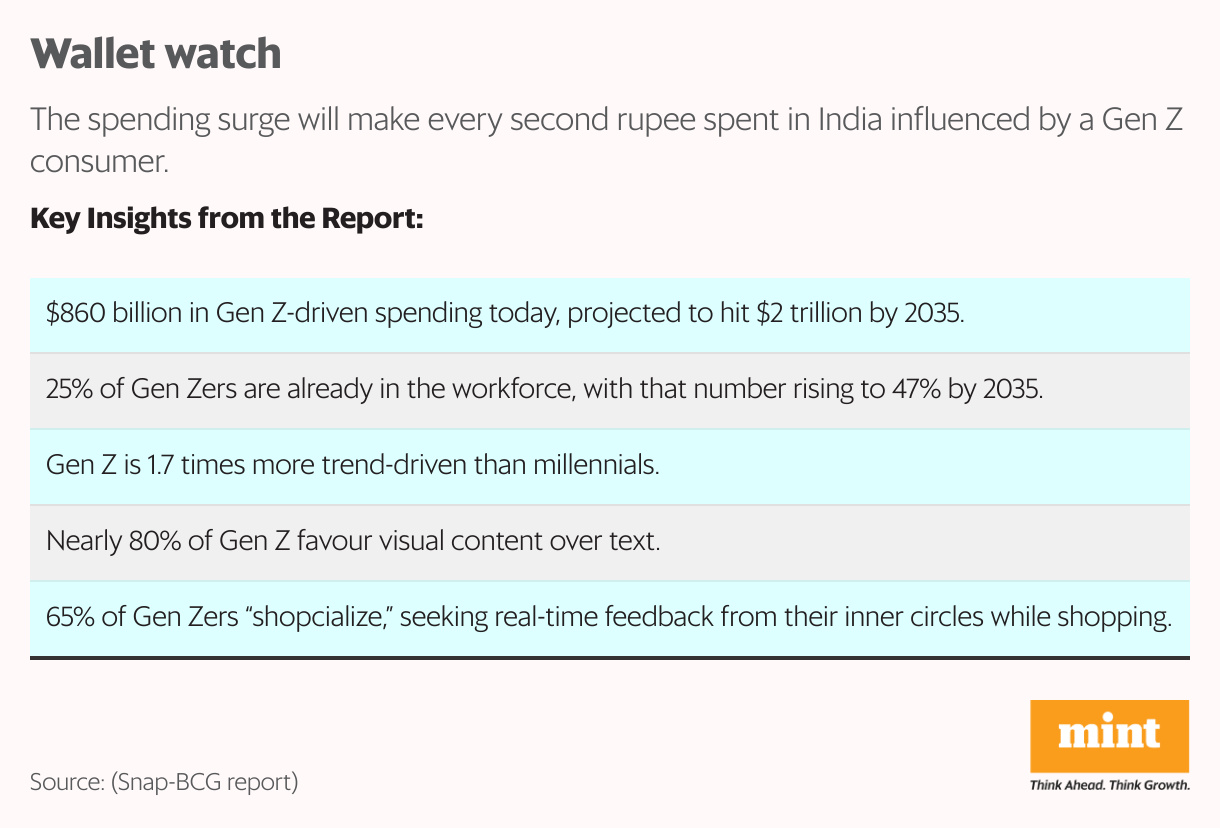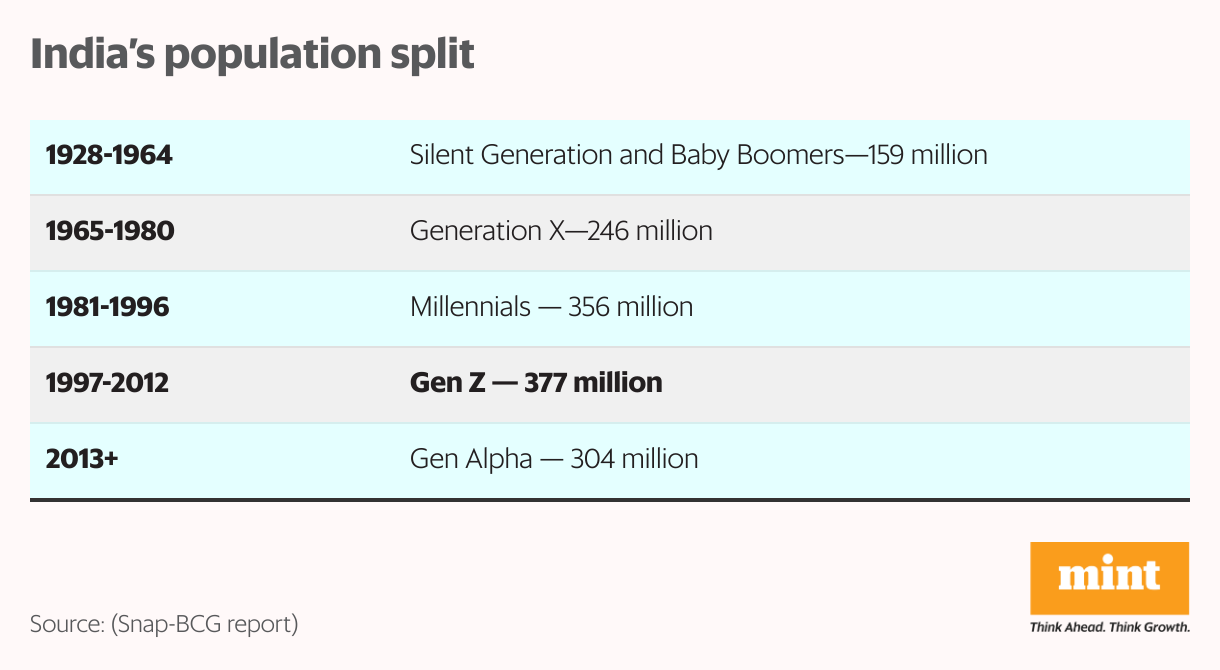

In Short:
Snap Inc’s report, created with Boston Consulting Group, reveals that Gen Z (born 1997-2012) will drive $2 trillion in consumer spending by 2035. Their values of authenticity and visual engagement are changing brand messaging. Although only 15% of brands target them, those aligned with Gen Z’s preferences could build loyalty. Key strategies include staying trendy and creating immersive shopping experiences.
Unveiling Gen Z’s Incredible Spending Power!
Snap Inc. has teamed up with the Boston Consulting Group (BCG) to shine a spotlight on a powerful demographic: those born between 1997 and 2012. Their recent report reveals that Gen Z is currently responsible for a whopping **$860 billion** in consumer spending—an astonishing figure projected to soar to **$2 trillion** by 2035!
The Gen Z Influence in India
This meteoric rise means that soon, every second rupee spent in **India** will be influenced by a Gen Z consumer. Pulkit Trivedi, the Managing Director of Snap Inc. India, emphasized that this marks the first comprehensive survey of Gen Z’s economic impact in the country. It dives deep into their spending habits and consumer behaviors, painting a rich picture of this dynamic group.
Values that Drive Spending
According to the report, Gen Z places a premium on **authenticity**, **visual engagement**, and **deep connections**. These core values are forcing brands to rethink their messaging. Trivedi remarked, “Gen Z is not just shaping their own buying decisions; they’re also influencing substantial household purchases, including cars and tech gadgets,” in an interview with Mint.
Unlike millennials, who witnessed the internet’s inception, Gen Z has been immersed in technology since birth, interacting with it in ways that shape their expectations from brands. “They’re born into tech, making them incredibly at ease with it. Their main form of expression? It’s visual. Creators have become their new go-to sources for product discovery, moving away from traditional endorsements by celebrities,” Trivedi pointed out, noting that nearly **70%** of Gen Zers seek recommendations from creators.
Incredible Spending Power and Influence
Currently, Gen Z’s direct spending hits **$200 billion** annually while they influence an additional **$660 billion** in household spending. Fast forward to 2035, and their direct spending could skyrocket to **$1.8 trillion**, representing nearly half of all consumer expenditure in India! With **25%** of Gen Z already in the workforce and projections indicating this number will grow to **47%** by 2035, their financial impact is undeniable.
However, despite this significant potential, only **15%** of brands have specific strategies targeting this vibrant group, even though **45%** recognize their growing importance, according to Trivedi.
“Brands that shift their messaging to align with Gen Z’s values are likely to earn lasting loyalty,” Trivedi stated. “Traditional celebrity endorsements may not strike a chord with this group; they prefer authentic figures who are relatable and grounded.”
Shopping Trends: Trends Over Brands
A striking finding from the report is Gen Z’s inclination toward trends rather than brand loyalty; they are **1.7 times** more likely to follow trends than millennials. This generation demands brands to keep up with ever-evolving preferences, highlighting the necessity for marketers to innovate swiftly.
Trivedi added, “If a brand can’t adapt, it risks losing its appeal to Gen Z.” Visuals and immersive experiences are essential tools in catching their fancy—nearly **80%** of Gen Z consumers prefer engaging with visuals like augmented reality (AR) and GIFs over traditional text-based formats.
As brands scramble to captivate this audience, Snap Inc. is collaborating with Indian businesses to create tailored, immersive experiences. For instance, during **Myntra’s** Sneaker Fest, Snap’s AR lens allowed customers to virtually try on shoes, leading to enhanced user engagement and a surge in sales!
Embracing “Shopcilizing”
Another unique trait of Gen Z shopper behavior is their reliance on social circles, known as “shopcilizing.”
The report revealed that **65%** of Gen Zers often share snaps and seek real-time input from friends while shopping, blending both online and offline retail experiences seamlessly. They might browse wish-lists or creator pages on their smartphones while physically in stores!
As India strides towards a **$10 trillion** economy by 2030, Gen Z will be at the forefront of this economic surge. Trivedi emphasized the urgent need for brands to engage this powerful cohort now to ensure relevance in the future: “The spending power of Gen Z is undeniable; brands must connect with them today to remain relevant tomorrow.”
For marketers eager to seize this immense opportunity, the report outlines five essential strategies: staying trend-focused, providing immersive visual experiences, encouraging social interactions during shopping, adopting omnichannel retailing, and collaborating with the right influencers. Those who align their tactics with Gen Z’s values and shopping habits stand to capture a notable piece of that **$2 trillion** pie!





